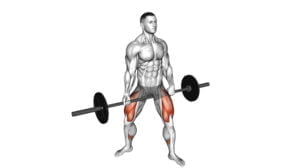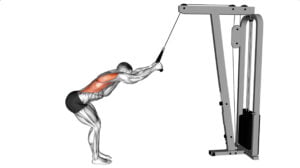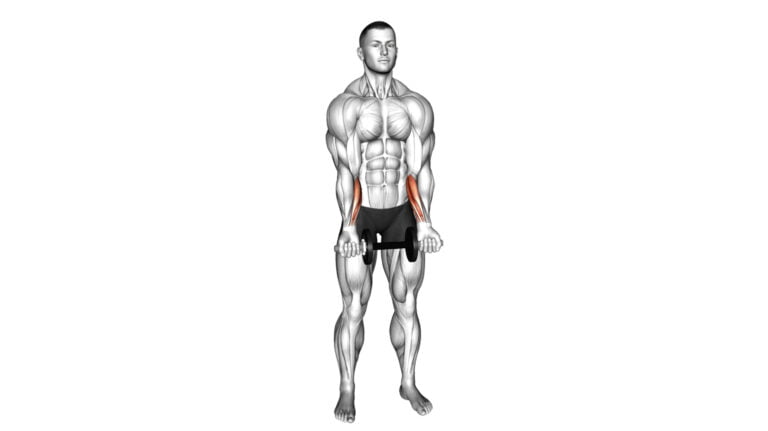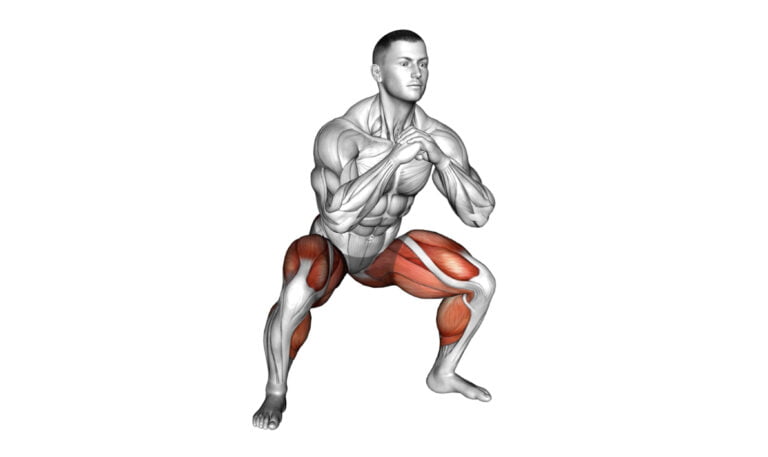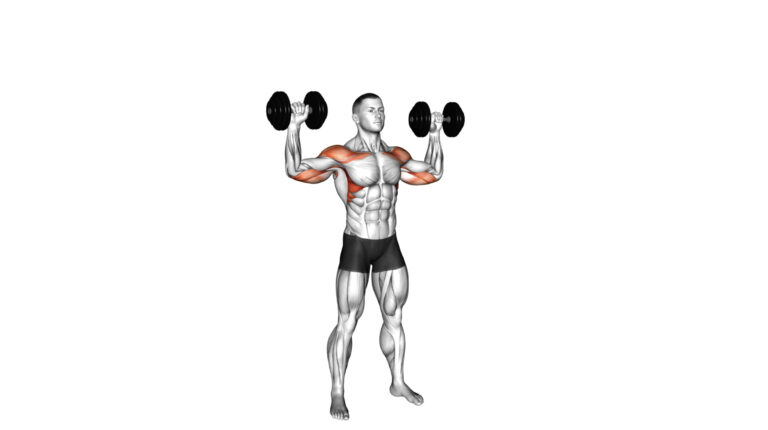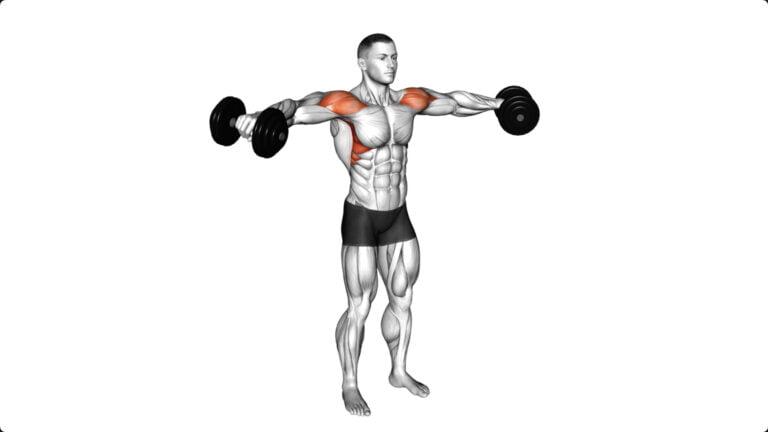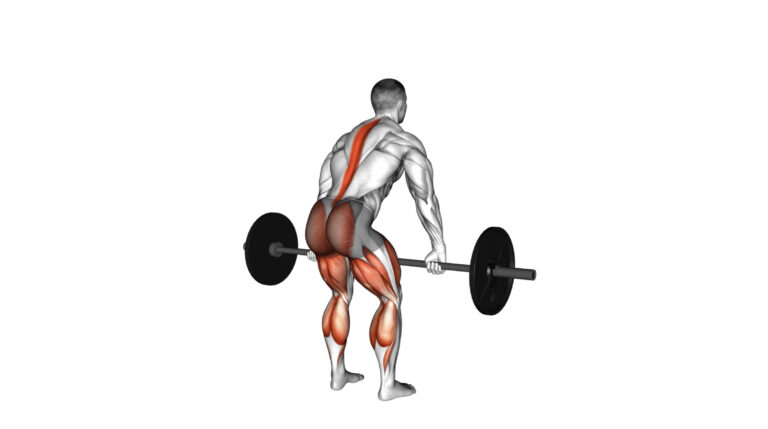5 Best Lower Back Exercises With Kettlebell – Get a Stronger Lower Back!
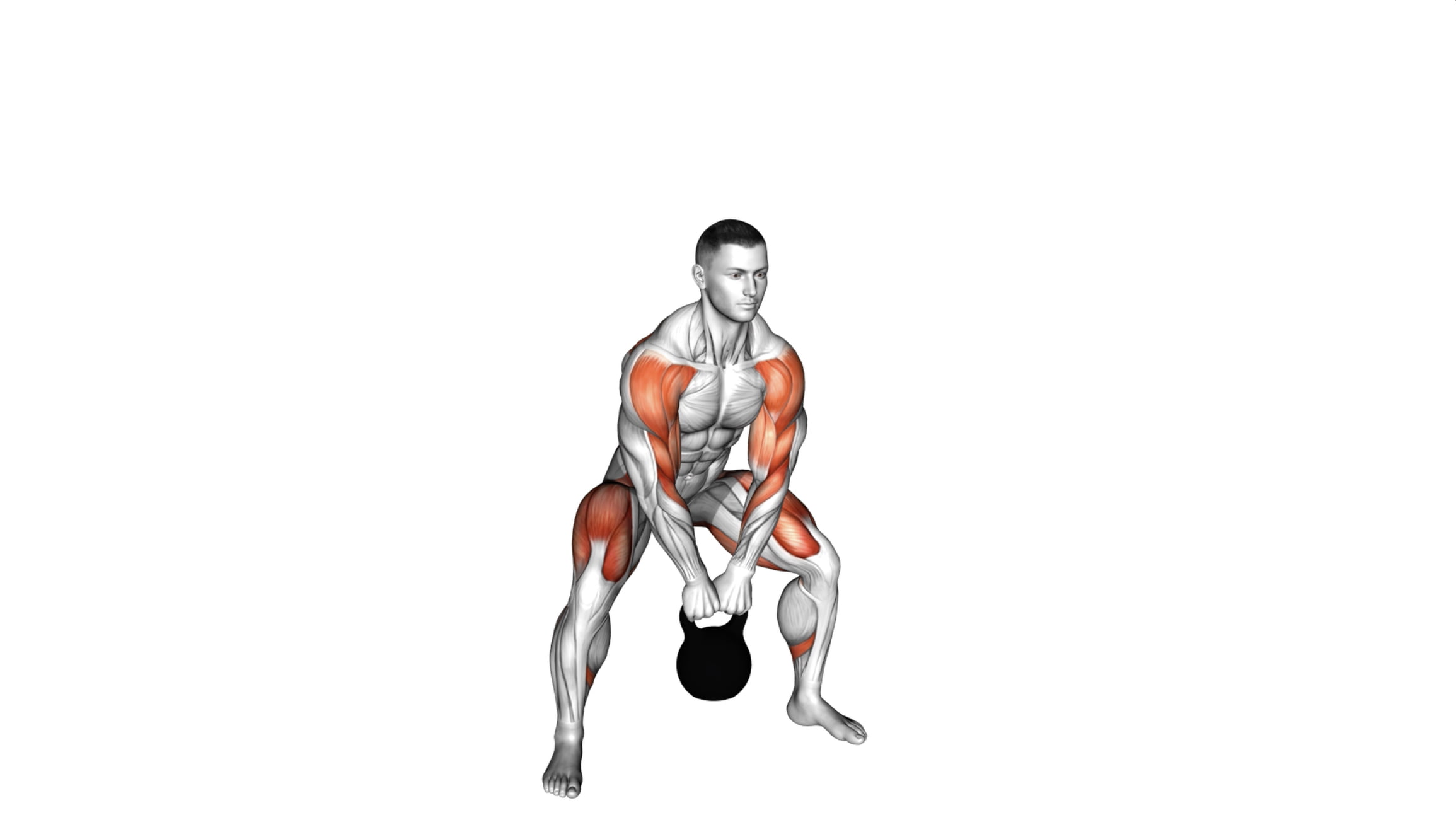
Strengthening your lower back isn’t just about warding off pain; it’s a cornerstone of a well-rounded fitness regimen. As a seasoned strength and conditioning coach with years of experience, I’ve seen firsthand the transformative power kettlebells have on building lower back muscle and preventing common injuries.
Kettlebell exercises, when done correctly, can fortify your posterior chain—the group of muscles that are key to maintaining endurance and power in daily movements.
Did you know that most adults will experience low back pain at some point in their life? By integrating specific kettlebell movements into your routine, you could significantly reduce this risk while improving functional strength.
This article is your gateway to enhancing core stability and elevating overall health through five essential exercises tailored for your lower back. Dive in to gain expertise-backed insights for a stronger foundation.

Discover how to lift, twist, and move—pain-free!
Key Takeaways
- Kettlebell Sumo High Pull, Angled Press, Figure 8 Swing, Sumo Deadlift, and Single Leg Deadlift are top exercises that target the lower back along with other muscle groups.
- Proper form and technique during kettlebell workouts prevent injuries and maximize strength gains in the lower back muscles.
- Varying your routine by increasing weight, adding reps or sets, or incorporating advanced techniques can further strengthen your lower back as you progress.
- A balanced diet rich in lean proteins and nutrient – dense food supports muscle recovery and complements the benefits of kettlebell exercises for the lower back.
- To optimize results while preventing overtraining, it’s recommended to engage in kettlebell lower back exercises 2-3 times per week with appropriate rest periods between sessions.
Benefits of Strengthening Your Lower Back
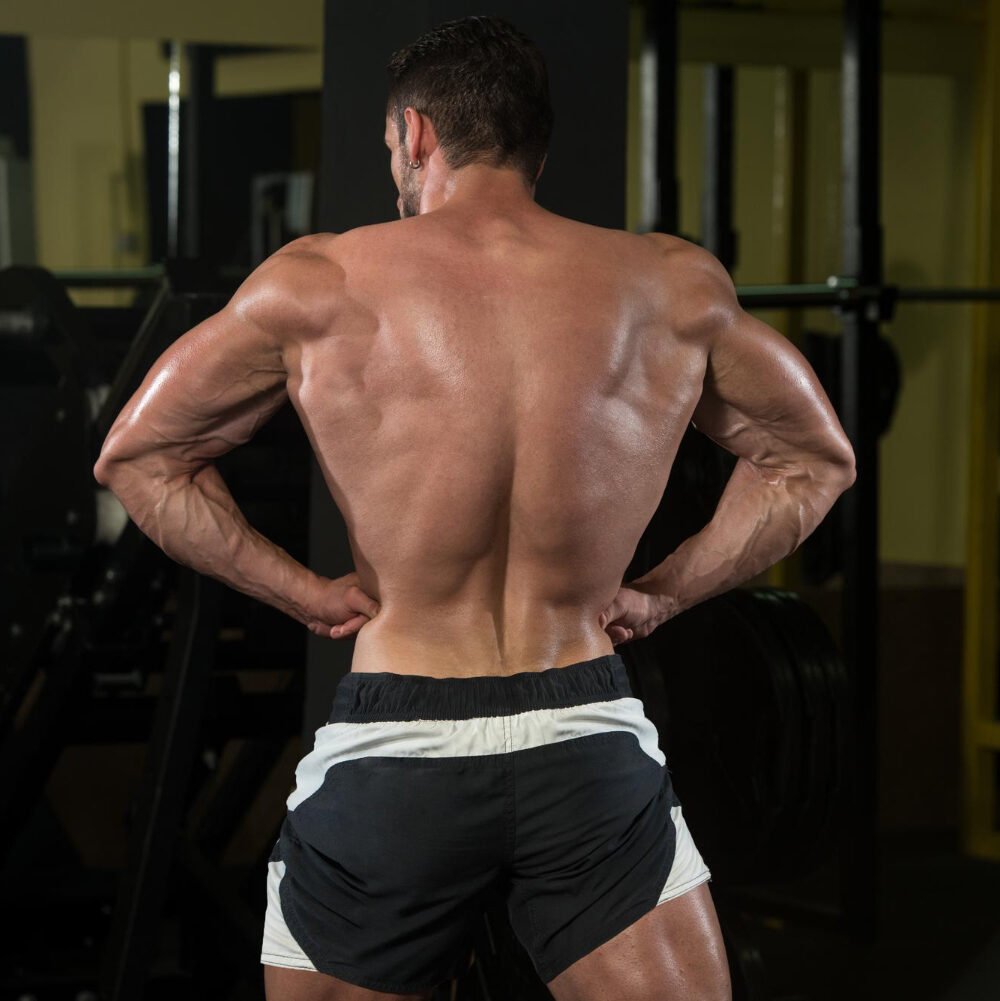
Strengthening your lower back can lead to improved posture, reduced risk of injury, and increased overall strength. These benefits can have a positive impact on your daily activities and help you move more confidently and comfortably.
Improved posture
Engaging in lower back exercises with a kettlebell can transform the way your body holds itself upright. Strengthening the muscles around your spine, especially with movements like kettlebell deadlifts and goblet squats, naturally encourages your shoulders to roll back and your chest to open up.
This alignment not only looks confident but also reduces strain on vertebral discs by distributing weight more evenly throughout the lumbar region.
With consistent strength training focusing on the erector spinae – those critical postural muscles along the spine – you’ll find yourself standing taller without even thinking about it.
Core strength improves as well because these workouts target muscle groups responsible for stabilizing your pelvis and hips during physical activity. Watch as improved posture paves the way for better balance, less back pain, and an increased capacity to handle daily tasks with ease and agility.
Reduced risk of injury
Strengthening your lower back with kettlebell exercises isn’t just about building muscle; it’s a crucial step in preventing back injuries. Your lower back plays a fundamental role in almost every movement you make, from lifting groceries to bending down to tie your shoes.
Stronger muscles there mean better support for your spine and reduced chances of strains or sprains that can keep you sidelined.
Building resilience through these workouts means the vertebrae, discs, and surrounding musculature are better equipped to handle stress. Regularly engaging in exercises like kettlebell swings or deadlifts helps condition these areas, enhancing flexibility and protecting against common ailments such as herniated discs or lumbar pain.
With each repetition, not only do you fortify the back muscles but also improve coordination between your glutes, hamstrings, and core—creating a shield around the vulnerable structures in your lower back.
Increased overall strength
Kettlebell exercises do more than just target your lower back; they amplify your total muscular strength. Engaging in kettlebell movements works a wide array of muscle groups simultaneously, building power from your glutes to your shoulder blades.
This full-body engagement ensures that you’re not only bolstering the muscles around your lumbar spine but also fortifying your legs, arms, and core for better coordination and force generation.
With consistent training using these dynamic exercises, you can develop increased muscular endurance across various body parts. Kettlebells encourage functional fitness, meaning the strength you gain directly translates to everyday activities and athletic performance.
Elevating overall strength leads to improved lifts in other weight training areas such as deadlifting heavier weights or mastering more push-ups with ease due to a stronger foundation built from the ground up.
How Kettlebell Exercises Build Lower Back Strength

Kettlebell exercises build lower back strength by engaging multiple muscles, improving stability and balance, and allowing for a full range of motion. This results in improved overall strength and reduced risk of injury.
Engages multiple muscles
Kettlebell exercises are effective because they engage multiple muscles simultaneously, providing a comprehensive workout. This integrated approach not only strengthens the lower back but also engages the glutes, hamstrings, and core, promoting overall stability and strength.
By involving various muscle groups in a single movement, kettlebell exercises offer an efficient way to maximize your lower back strengthening routine. Incorporating these compound movements into your workout can lead to improved functional strength and reduced risk of injury.
To get the most out of these multi-muscle engaging exercises for your lower back strength training, pay attention to proper form and technique which will help maximize their benefits while minimizing any risk of potential strain or injury.
Always begin with appropriate weight selection to maintain proper alignment and control throughout each exercise.
Improves stability and balance
Kettlebell exercises play a vital role in enhancing stability and balance by engaging multiple muscle groups simultaneously. The movements involved, such as squats and deadlifts, require coordination and control from various muscle groups in the lower body, including the glutes, hamstrings, and quadriceps.
This engagement not only strengthens these muscles but also improves overall stability and balance through functional movements. Additionally, the dynamic nature of kettlebell exercises challenges the stabilizing muscles around the joints to work cohesively, leading to improved proprioception and balance control.
Engaging in kettlebell exercises not only enhances strength but also focuses on building a solid foundation of stability and balance for everyday activities. Incorporating these workouts into your routine can significantly contribute to an overall improvement in physical well-being while reducing the risk of injury during daily tasks or sports activities.
Allows for a full range of motion
Engaging in kettlebell exercises facilitates a full range of motion, enabling the lower back muscles to be worked through their complete movement patterns. This comprehensive engagement enhances flexibility and strength across various planes of movement, promoting better functional abilities and reducing the risk of injury during daily activities and workouts.
5 Best Kettlebell Exercises for Strengthening Your Lower Back
Discover the top kettlebell exercises for strengthening your lower back and take your fitness to the next level.
1. Kettlebell Sumo High Pull
The Kettlebell Sumo High Pull engages the lower back, glutes, and shoulders. Start with your feet wider than hip-width apart, hold the kettlebell with both hands between your legs.
Bend your knees and push your hips back into a squat position. Then, explosively extend your hips and knees while pulling the kettlebell up to shoulder height by leading with your elbows.
Keep the movement fluid and controlled without using momentum.
2. Kettlebell Angled Press
Transitioning from the powerful sumo high pull, the angled press with a kettlebell is an effective exercise for building strength in your lower back. This dynamic movement engages your core and stabilizing muscles while targeting the shoulders and triceps.
Stand with feet shoulder-width apart, holding a kettlebell at shoulder height in one hand. Press the kettlebell upward and slightly inward, rotating your wrist as you extend your arm to create an angle.
Lower the kettlebell back down under control, keeping tension on your lower back throughout the movement.
3. Kettlebell Figure 8 Swing
The Kettlebell Figure 8 Swing engages the lower back, glutes, and core muscles. This dynamic exercise improves strength and stability while also promoting flexibility in the hips and hamstrings.
By incorporating a fluid motion that mimics everyday activities, such as lifting heavy objects or bending to pick something up from the ground, this exercise enhances functional fitness and reduces the risk of lower back injuries.
The Figure 8 swing is an effective way to improve overall lower body strength and enhance mobility.
4. Kettlebell Sumo Deadlift
Transitioning from the dynamic movement of the Kettlebell Figure 8 Swing, the Kettlebell Sumo Deadlift offers a focused lower body workout that targets the glutes, hamstrings, and lower back.
This exercise is especially effective in strengthening the muscles surrounding your spine and improving overall stability. By engaging multiple muscle groups simultaneously, it helps build strength and resilience in your lower back while promoting proper lifting mechanics.
To perform a Kettlebell Sumo Deadlift, stand with your feet wider than hip-width apart, toes pointing slightly outward. Holding a kettlebell with both hands between your legs, hinge at your hips to lower the weight towards the floor while keeping your back straight.
5. Kettlebell Single Leg Deadlift
The Kettlebell Single Leg Deadlift targets the hamstrings, glutes, and lower back for a comprehensive strengthening workout. Begin by holding a kettlebell in one hand and raising the opposite leg behind you while maintaining a straight line from head to heel.
Lower the kettlebell toward the ground while keeping your back flat and engaging your core for balance. Return to standing position and repeat on both legs to build strength and stability.
This exercise not only enhances lower body strength but also improves balance, making it an effective addition to any lower back strengthening routine. Incorporating the Kettlebell Single Leg Deadlift into your workout regimen can help prevent injuries and enhance overall athletic performance through targeted muscle engagement.
Tips for getting the most out of each exercise

Focus on proper form and technique, listen to your body, and gradually increase your weights. To learn more about maximizing the benefits of these exercises for strengthening your lower back, keep reading!
Common Mistakes
To avoid injury and maximize the benefits of kettlebell exercises for lower back strengthening, it’s essential to be aware of common mistakes. Here are some mistakes to watch out for:
- Incorrect Form: Improper form can strain the lower back and increase the risk of injury. Maintain a straight back, engage your core, and execute each exercise with proper technique.
- Using Too Much Weight: Overestimating your strength and using excessively heavy kettlebells can compromise form and lead to injury. Choose a weight that allows you to complete each exercise with control and good form.
- Neglecting Warm-Up: Skipping a proper warm-up can lead to muscle strains or other injuries. Always start with dynamic stretches and light cardio to prepare your body for the workout.
- Ignoring Breathing Technique: Breath control is crucial during kettlebell exercises. Holding your breath or breathing irregularly can cause unnecessary tension in the muscles and reduce performance.
- Lack of Progression: Failing to increase weights or challenge yourself over time can hinder progress in strengthening the lower back muscles. Gradually increase the intensity as your strength improves.
Choosing the right weight
Selecting the appropriate weight for kettlebell exercises is crucial. Start with a lighter weight to learn and perfect your form before progressing to heavier options. Gradually increase the weight as you become more comfortable with the exercises, ensuring that it challenges your muscles without compromising proper technique.
Consider factors such as your current strength level, experience with resistance training, and specific exercise goals when choosing the right weight for each kettlebell exercise. Avoid selecting a weight that is too light or too heavy; it should allow you to perform the recommended number of repetitions with good form while still feeling challenged.
Listening to your body’s response can guide you in finding the ideal weight for effective lower back strengthening.
Recommended Sets And Reps
After choosing the right weight for your kettlebell exercises, the next step is to understand the recommended sets and reps for each move to optimize lower back strength without overdoing it.
| Exercise | Sets | Reps |
|---|---|---|
| Kettlebell Sumo High Pull | 3-4 | 8-12 |
| Kettlebell Angled Press | 3-4 | 6-10 |
| Kettlebell Figure 8 Swing | 2-3 | 10-15 |
| Kettlebell Sumo Deadlift | 3-5 | 6-8 |
| Kettlebell Single Leg Deadlift | 3-4 | 5-8 (each leg) |
Eat a Healthy Diet
To complement your kettlebell exercises, maintaining a healthy diet is crucial for promoting the strength and flexibility of your lower back. Consuming a balanced diet rich in lean proteins, fruits, vegetables, whole grains, and healthy fats can aid in reducing inflammation and supporting muscle recovery.
Additionally, staying well-hydrated by drinking plenty of water throughout the day supports overall body function and tissue health. Ensuring that you consume an adequate amount of nutrients helps to fortify your body against common issues like back pain or injuries while providing the energy required to perform at your best during physical activities.
By focusing on nutrient-dense foods and avoiding excessive processed sugars and unhealthy fats, you provide essential support to your lower back muscles as they adapt to the demands of exercise.
Incorporating omega-3 fatty acids from sources such as fish or flaxseeds can help reduce inflammation levels within the body which may alleviate discomfort related to lower back pain.
Putting It All Together: A Kettlebell Lower Back Workout
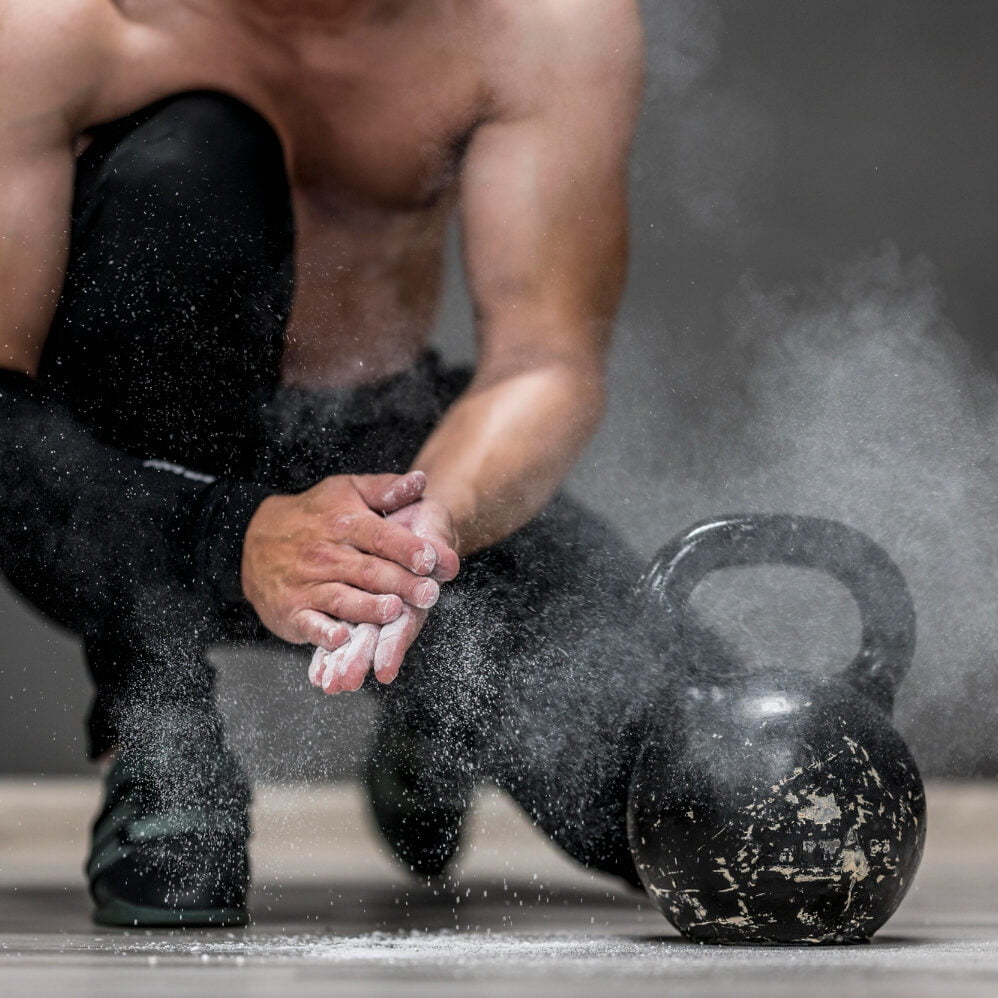
In this section, we will provide tips for beginners and modifications for advanced users, along with guidance on frequency and rest periods.
Tips for beginners
Start with light kettlebells to practice proper form and avoid overexertion. Focus on mastering each exercise before increasing weight to prevent injury. Keep your core engaged throughout the movements to support your lower back and maintain stability.
It’s also essential to seek guidance from a certified trainer if you’re new to kettlebell training, ensuring that you learn the correct techniques from the start.
Stick to lighter weights until you’ve built up sufficient strength and familiarity with each exercise. Gradually increase the weight as your muscles adapt, but always prioritize maintaining good form over lifting heavier loads.
Modifications for advanced users
To progress from the beginner stage to advanced kettlebell exercises for strengthening your lower back, consider these modifications:
- Increase Weight: Gradually increase the weight of the kettlebell to provide a higher challenge for your back muscles while maintaining proper form and technique.
- Higher Reps or Sets: Add more repetitions or sets to each exercise to push your lower back muscles further and enhance endurance and strength.
- Combine Exercises: Create more complex routines by incorporating multiple kettlebell exercises in succession, promoting greater muscle engagement and enhanced coordination.
- Single-Leg Variations: Introduce single-leg variations for deadlifts, swings, or other exercises to intensify the balance and stability requirements while targeting specific lower back muscles more effectively.
- Tempo Changes: Manipulate the speed at which you perform each exercise, incorporating slower eccentric movements to emphasize muscle control and fast explosive concentric movements for power development.
- Incorporate Advanced Techniques: Implement techniques like isometric holds, explosive movements, or challenging angles to stimulate further muscle growth and strength development in your lower back.
Frequency and rest periods
Modifications for advanced users focus on tailoring workouts to a higher level of expertise. For beginners and seasoned practitioners alike, the frequency and rest periods are crucial for optimizing results and preventing overtraining. Here are some guidelines to consider:
- Frequency: Aim to train your lower back with kettlebell exercises 2-3 times per week. This frequency allows for adequate recovery while promoting muscle adaptation and strength gains.
- Rest Periods: Between sets, rest for 60-90 seconds to allow your muscles to replenish energy stores and recover from fatigue. For more intense exercises, such as deadlift variations, longer rest periods of 2-3 minutes may be necessary.
- Recovery Days: Incorporate at least one day of rest between lower back workouts to ensure proper recovery. Use this time for active recovery activities like walking or gentle stretching.
- Listen to Your Body: Pay attention to how your body responds to the frequency and exertion of the workouts, adjusting as necessary based on signs of fatigue or lingering muscle soreness.
- Progression Approach: As you advance, progressively increase the frequency and decrease rest periods in line with your improved conditioning and recovery capacity.
- Individualized Consideration: Factors such as age, fitness level, and overall health should also influence your decisions regarding frequency and rest periods.
Conclusion

In conclusion, mastering these 5 best kettlebell exercises for strengthening your lower back can significantly enhance your overall strength and stability. By incorporating these practical and efficient techniques into your workout routine, you can achieve improved posture, reduced risk of injury, and increased lower back strength.
Can you envision the impact of engaging in a consistent regimen that targets your lower back muscles? Embrace these strategies to experience enhanced performance and functionality in everyday activities.
Consider exploring additional resources or seeking guidance from a personal trainer to further elevate your lower back strengthening journey.
FAQs
1. What are some kettlebell exercises for lower back strength?
Great kettlebell exercises to strengthen the lower back include Romanian deadlifts, partial squats, and hyperextensions. These moves target key muscles like the latissimus dorsi, gluteus maximus, and abdominals.
2. Can kettlebell workouts ease lower back pains?
Absolutely! Regularly performing correct form kettlebell exercises such as deadlifts and squats can bolster your lower back muscles and potentially reduce back pains by strengthening your spinal support system.
3. Do I need a personal trainer to do these kettlebell exercises safely?
While not mandatory, it’s wise to consult with a personal trainer when starting out to ensure you’re doing each exercise properly to avoid injury and maximize benefits for your lumbars.
4. How does the Romanian deadlift with a kettlebell help my lower back?
The Romanian deadlift focuses on flexing at the hips while keeping your spine straight which engages the lower back muscles as well as hamstrings and glutes, aiding in stability of pelvis and spine.
5. Are there upper body benefits to doing these kettlebell workouts too?
Yes indeed! Kettlebells also work wonders on upper body muscles like rear delts (shoulders), lats (latissimus dorsi), levator scapulae (neck), all essential for full-body strength including rib cage areas!
6. Is it safe to use a heavy weight during these exercises if I have arthritis or previous injuries?
If you have conditions like arthritis or prior injuries especially related to spinal cord or neck always start light regarding weight choices; consider even using no weights initially just focusing on form until strength builds up gradually.

Author
Years ago, the spark of my life’s passion ignited in my mind the moment I stepped into the local gym for the first time. The inaugural bead of perspiration, the initial endeavor, the very first surge of endorphins, and a sense of pride that washed over me post-workout marked the beginning of my deep-seated interest in strength sports, fitness, and sports nutrition. This very curiosity blossomed rapidly into a profound fascination, propelling me to earn a Master’s degree in Physical Education from the Academy of Physical Education in Krakow, followed by a Sports Manager diploma from the Jagiellonian University. My journey of growth led me to gain more specialized qualifications, such as being a certified personal trainer with a focus on sports dietetics, a lifeguard, and an instructor for wellness and corrective gymnastics. Theoretical knowledge paired seamlessly with practical experience, reinforcing my belief that the transformation of individuals under my guidance was also a reflection of my personal growth. This belief holds true even today. Each day, I strive to push the boundaries and explore new realms. These realms gently elevate me to greater heights. The unique combination of passion for my field and the continuous quest for growth fuels my drive to break new ground.






